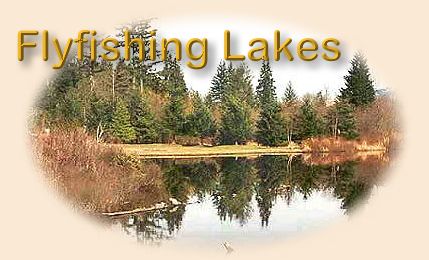|
Scuds or freshwater shrimp are cousins to
aquatic sow bugs, crayfish and shrimp. Only
Chironomids are more important in the trout's diet.
Scuds are also available in rivers, streams and
spring creeks. In stillwaters they can form over
20% of the trout's food intake during the open-water
season. In the early spring and fall scuds are a
preferred food item. Rich in protein, scuds enable
trout to quickly pack on the weight. Growth rates
of over a pound and a half within a single season
are not uncommon. Any body of water containing scuds
guarantees a good population of fat, healthy trout.
In the photo shown above, is a cluster of feeding scuds.
Notice the orange marsupium on the upper scud.
Scuds have a distinct armadillo appearance, due to
their segmented exoskeleton. Scuds carry their seven
pairs of legs and gills beneath their body. The front
two pairs grasp food while the rear legs are an
efficient form of locomotion. Scuds are capable
of quick bursts of speed. More often, they move
and crawl along the bottom in a very random and
erratic fashion. It is not uncommon to see scuds
upside down or falling through the water in a
series of acrobatic motions. Slow, varied retrieves
work best.
Scuds have no emergence of any kind. They begin
life as a scud and end life as a scud. Scuds mate
in a piggyback fashion with the female on top.
Prolific breeders, one pair of scuds under ideal
conditions can produce up to seven broods per year
with up to 20,000 offspring. In these plague-like
numbers it is easy to see why scuds are such an
important food source for trout. Some productive
lakes contain densities of over 10,000 scuds per
square yard. Omnivorous, opportunistic feeders,
scuds feed upon carrion, weeds and other aquatic
invertebrates. I have seen them eat water boatmen
and attack caddis larvae and damselfly nymphs in
"piranha-like" fashion.
The two main species of scuds fly fishers and tiers
need to consider are Gammarus and
Hyalella. Hyalella are the most widespread.
Gammarus need high concentrations of
calcium to develop and maintain their exoskeletons.
Waters containing high concentrations of calcium are
clear and have dense mats of chara weed and marl
shoals. Algae lakes are also productive and harbor
large scud populations. I have seen Hyalella
present in high alpine lakes, coastal sloughs and
backwaters of large rivers. The only distinguishing
factor between the two species is size. Hyalella
seldom exceed 1/8 of an inch in length, while Gammarus
can reach 5/8 of an inch or larger. Trout feed on both
species but from my observations show a preference for
the smaller Hyalella, especially in the fall.
~ PR
More on Scuds from Phil Rowley's excellent book,
Fly Patterns for Stillwaters next time.
Credits: Excerpt from Fly Patterns
for Stillwaters By Philip Rowley, published
by Frank Amato Publications. We appreciate use
permission.
|


